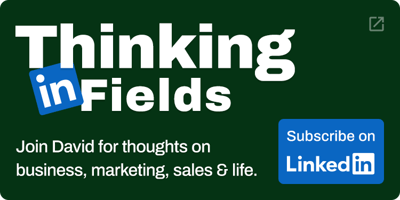How do you use your social media channels?
In our experience there are certain issues that are applicable to all brands across all social media channels: content, tone and sharing. So we’ve put together a very brief guide to using social media : what to say and when to say it, how to say it, and how to get people to share it.
What should you say?
The key thing to remember when creating content for social media is that it is a relationship-building tool, not a sales tool. So don’t discuss sales, or try and make them; but it is fine to discuss your products and services outside of a sales context, especially if first mentioned by a consumer. This is best phrased as ‘news’ about the products, focusing on areas such as launches, upgrades and promotions.
The frequency of unprompted mentions of products (or services) should depend on the channel and target audience. At Purple Frog we fix a percentage of brand-centric communications for all our social media strategies and content libraries: this is usually the minority of the plan, but can vary enormously. If a user begins to discuss a product, great, but make sure you don’t overload them with information: give them a little bit at a time and keep it focused on what they asked, not what you want to say.
Content doesn’t have to be lengthy: just keep it relevant to your community and try to maintain some variety over time. Don’t worry that not every post will interest every user, just make sure you cater to them all on a regular and equal basis.
Don’t forget to look at what your users have written: in particular, ensure you answer any direct questions as early as possible. It is not necessary, or appropriate, to join every conversation, but don’t hesitate to interact with your users. Read the conversations users have started and just contribute where you have something to say. If users have responded to a post you started, show you’re paying attention to the conversation as it progresses. Your aim should be to create quality engagement, which means giving users time to talk and feel listened to: just as you would when you chat to a friend.
Most importantly, update your social media channels every day.
How should you say it?
Match your tone to the social network: social networks all suit different tones, but it is a very different tone to most advertising and certainly to sales. Never use a corporate tone on Facebook.
Be casual, friendly and above all cultivate a peer-to-peer relationship between users and brand: don’t talk down to your users. It’s not always what you say: it’s how you say it.
It’s hard to do this out of any context, but here are a few examples:
- Say ‘us’ and ‘we’ instead of your brand name where you can:
- e.g. ‘We’re working on…’ instead of ‘Purple Frog are working on…’
- or: ‘Come and join us at…’ instead of ‘Come and join Purple Frog at…’
- Use abbreviations and common slang where appropriate:
- hey
- haven’t, isn’t, wouldn’t…
- exclamations: e.g. ‘pretty darn good’
- Don’t worry about using full sentences:
- Good? Excited?
- It’s fab!
How do you get users to share it?
The most shared content on social media is not straight text (excluding Twitter), but links, images, videos, competitions, apps, games and freebies. So when you’re planning your social content, make sure to include the first 3 of the list above and if you’re looking to enhance your reach and sharing, consider investing in the last 4.
Links:
- e.g. new content on your website, current news articles, sites relevant to your audience
- Try and make a comment, even if it’s just that you think it’s interesting!
Images:
- Take loads of pictures of any events that you do: product launches, shows, exhibitions…
Videos:
- Remind people of the content on your Youtube channel, even if it’s not new.
- Unless it’s something purely entertaining it’s best to briefly advise people whether or not it’s relevant to them.
Competitions:
- Everyone loves a competition, it’s a really good way to get people to start coming to your page. Then you use your other shareable content to keep them coming back.
- We don’t think that competitions revolving around a simple ‘like’ are worth that much (in terms of building interest in you socially): better to think of something that requires a bit more involvement and users to spend more time on your page.
Apps:
- Apps can be used for loads of things, such as: competitions, collecting ideas, user participation, games and more.
Games:
- Games are great engagement tools because they encourage users to spend longer engaging with the brand.
- Games should have a simple proposition that’s easy to grasp.
- Shareable features of games include points, to compete against friends, and new levels to unlock.
- Even the simplest game can be addictive: just think Minesweeper!
- NB: Games can be Apps, but they don’t have to be.
Freebies:
- Everyone loves freebies even if they’re not tangible like free samples: these are often shown as ‘hidden content’ released in exchange for liking/following your page.
- Examples include: exclusive interviews, sneak previews of releases, and free downloads such as posters, music videos and songs.
Finally, don’t forget to invite users to upload their own content too: people love being asked to contribute their own ideas and opinions.
Summary
- This is a relationship-building tool, not a sales tool.
- Make regular posts
- Keep it varied
- Listen to your users/followers
- Keep it casual and friendly
- Use rich media to maximise sharing
Relationships take time to build, so don’t look for instant gratification: prove your social worth over time and your community will grow!
Interested? To find out how Purple Frog could help you with your social media strategy and content planning email more@purplefrog.co.uk or call 01844 295170.
More blog posts
Are you a hedgehog or a fox?
We believe that everything is routed in a big idea, that success can be achieved by following a big idea, by remaining focused...
Is the Way you Budget Your Marketing Spend Wrong?
Marketing should never be a blind gamble, but a calculated risk that always guarantees you a return. If this seems like an...




